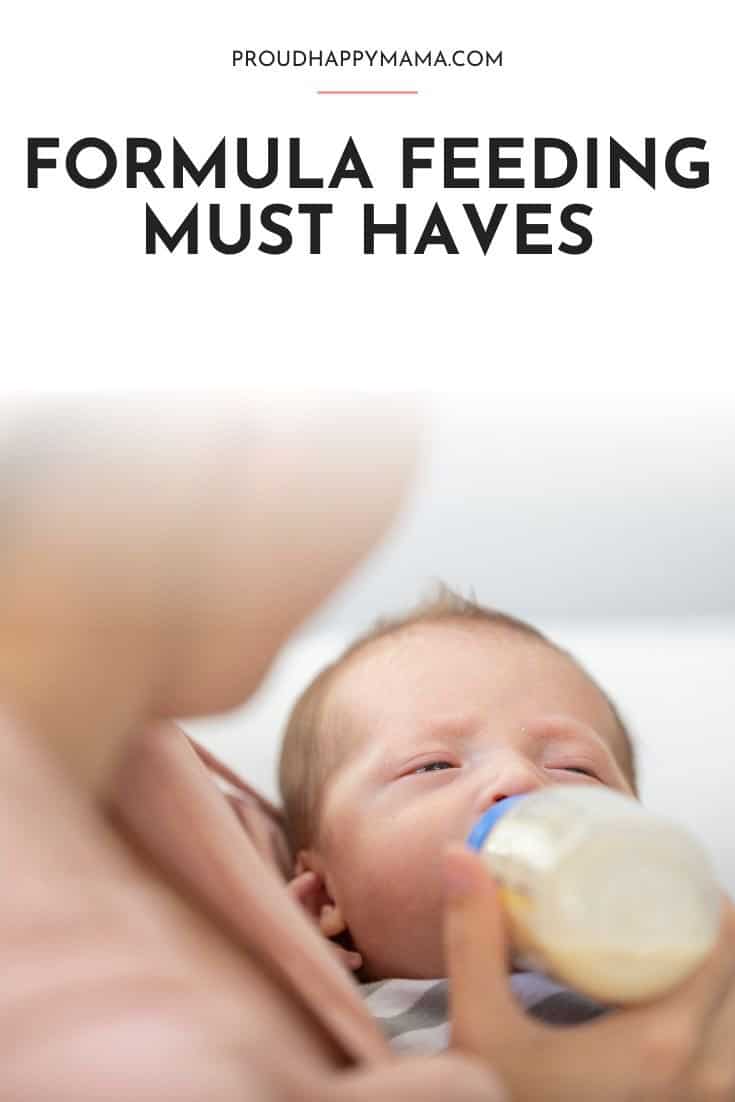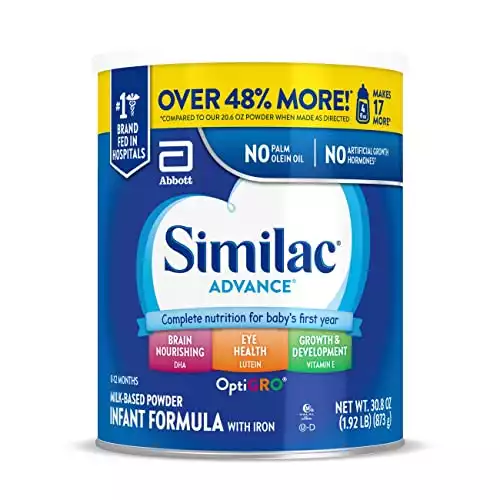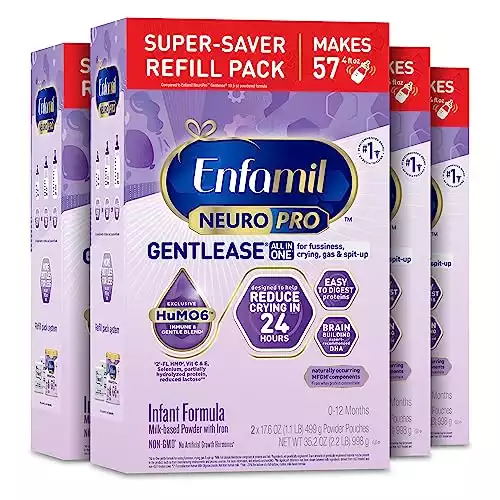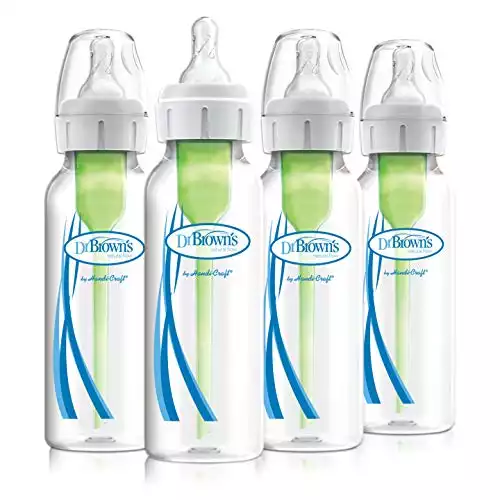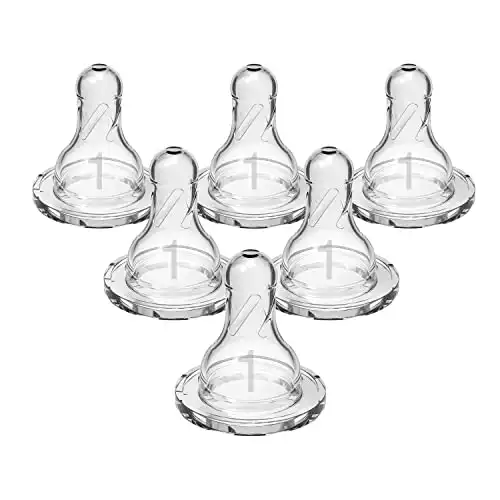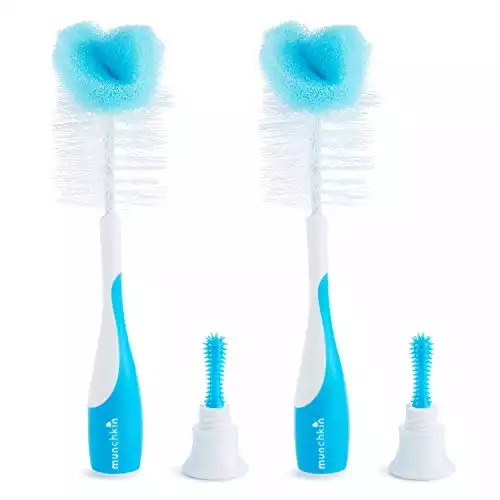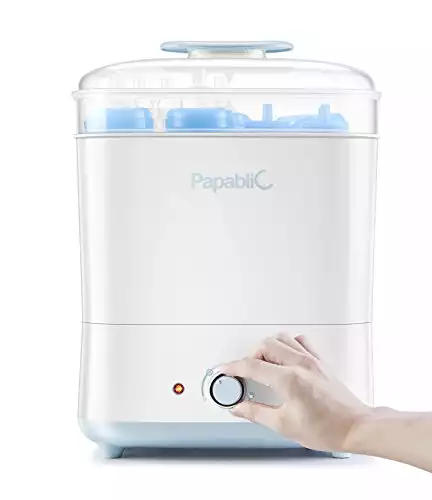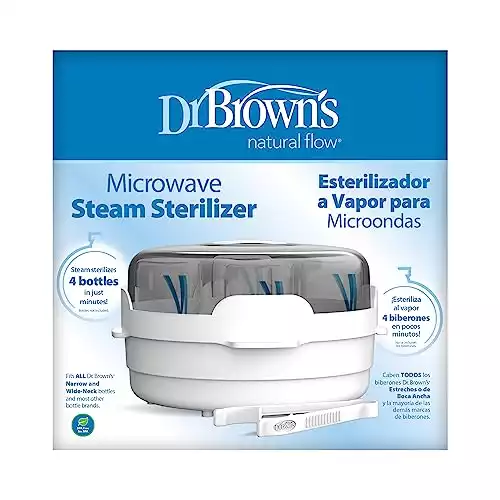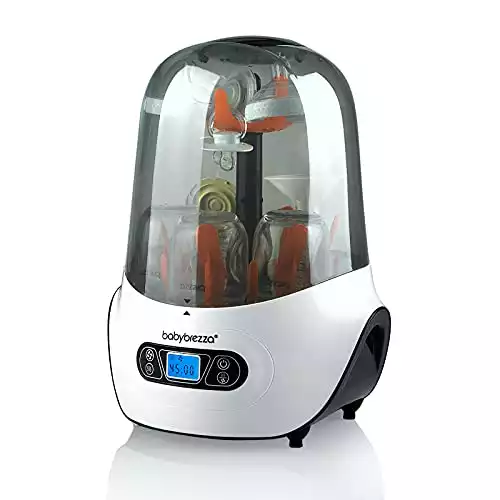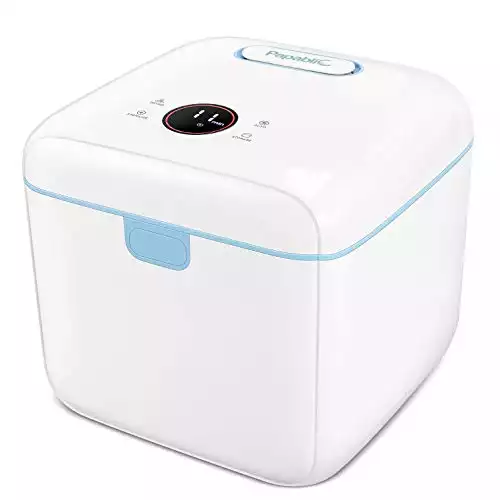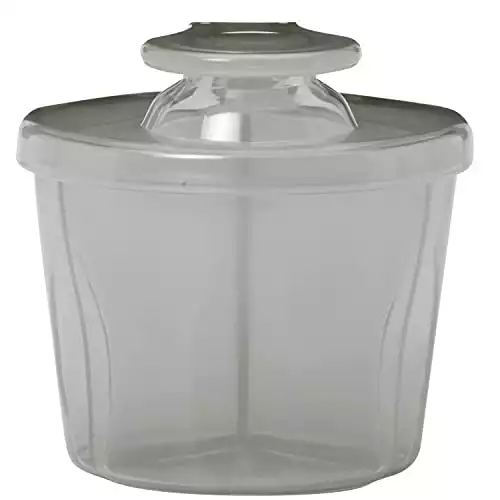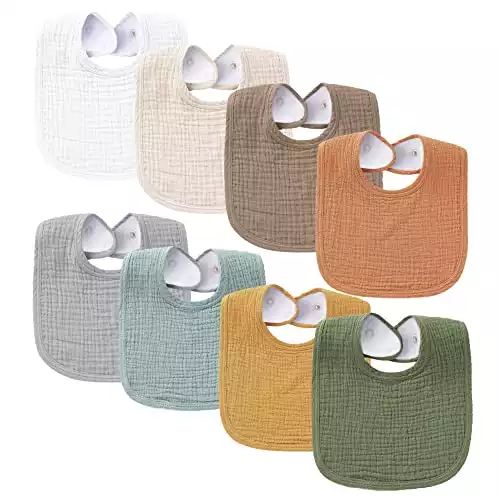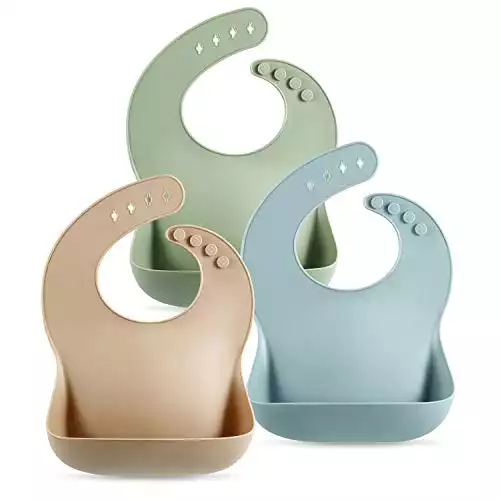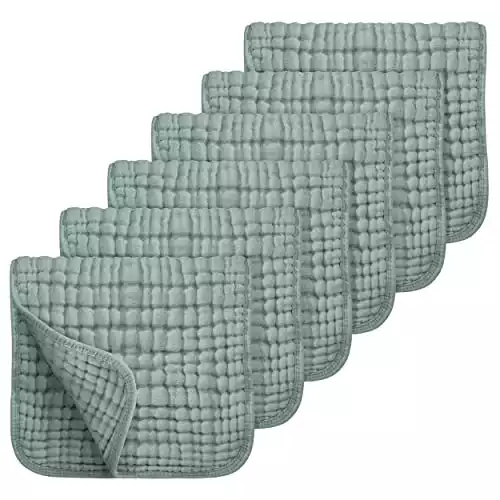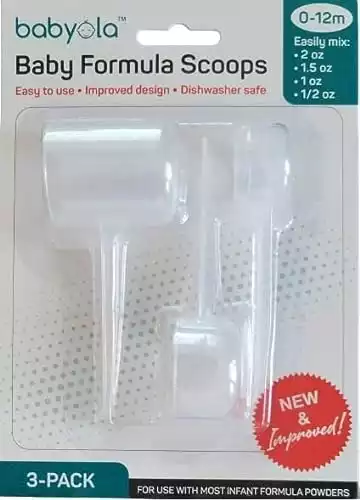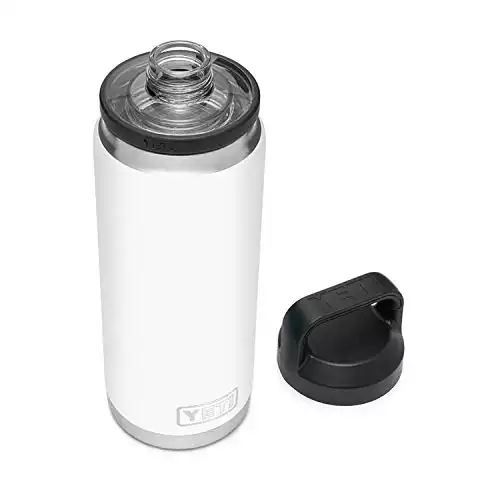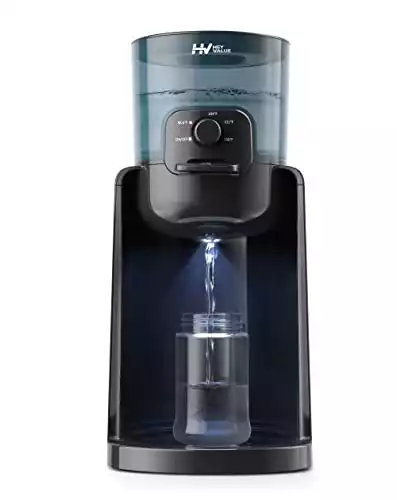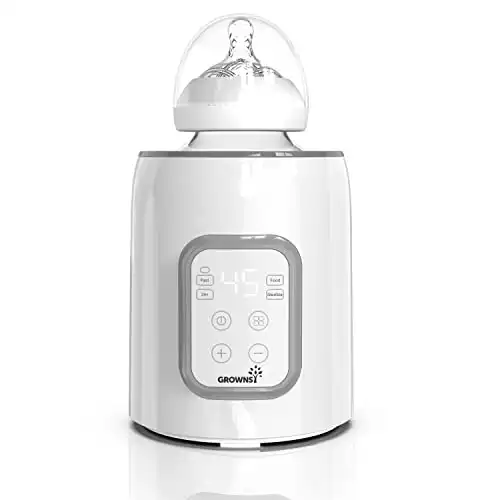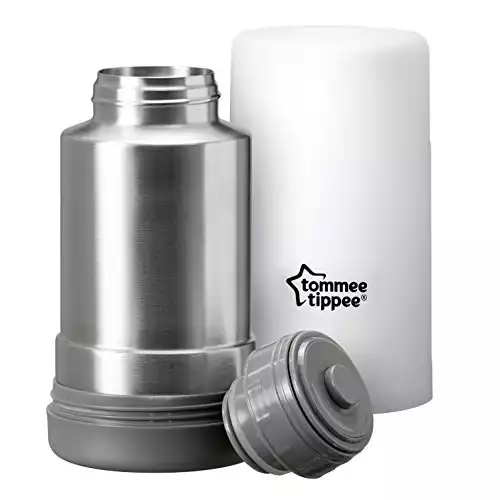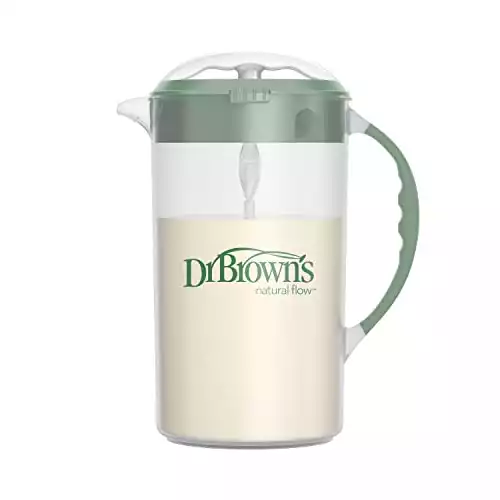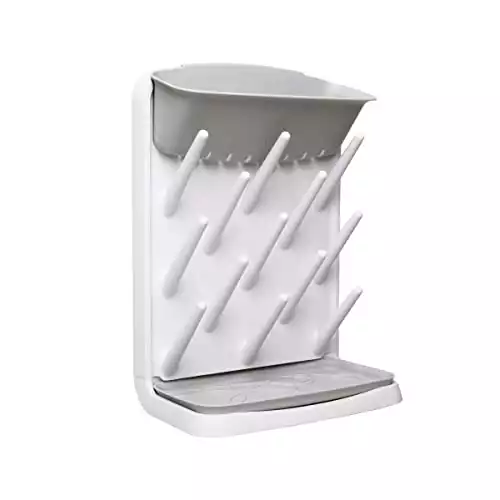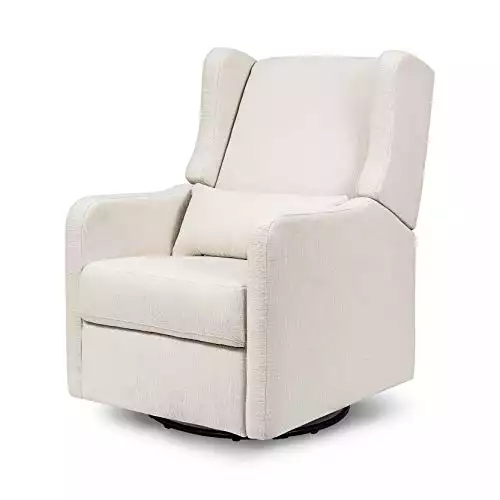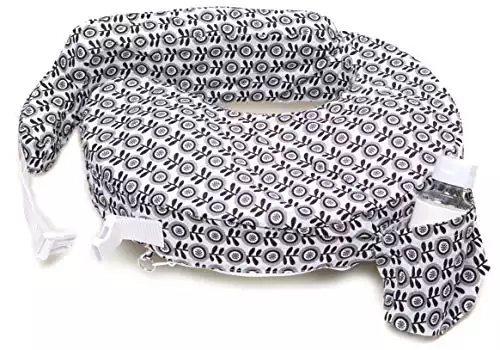Formula Feeding Must Haves
When it comes formula feeding, there are some essential must-haves that you and your little one absolutely cannot do without. These formula feeding must haves are designed to make your life as a parent easier and ensure a safer.
And of course, a more comfortable feeding process for your baby.
Whether you’re solely formula feeding or mix feeding, having the right formula feeding supplies can significantly enhance the overall feeding experience for both you and your little one.
This post contains affiliate links. See our full disclosure here
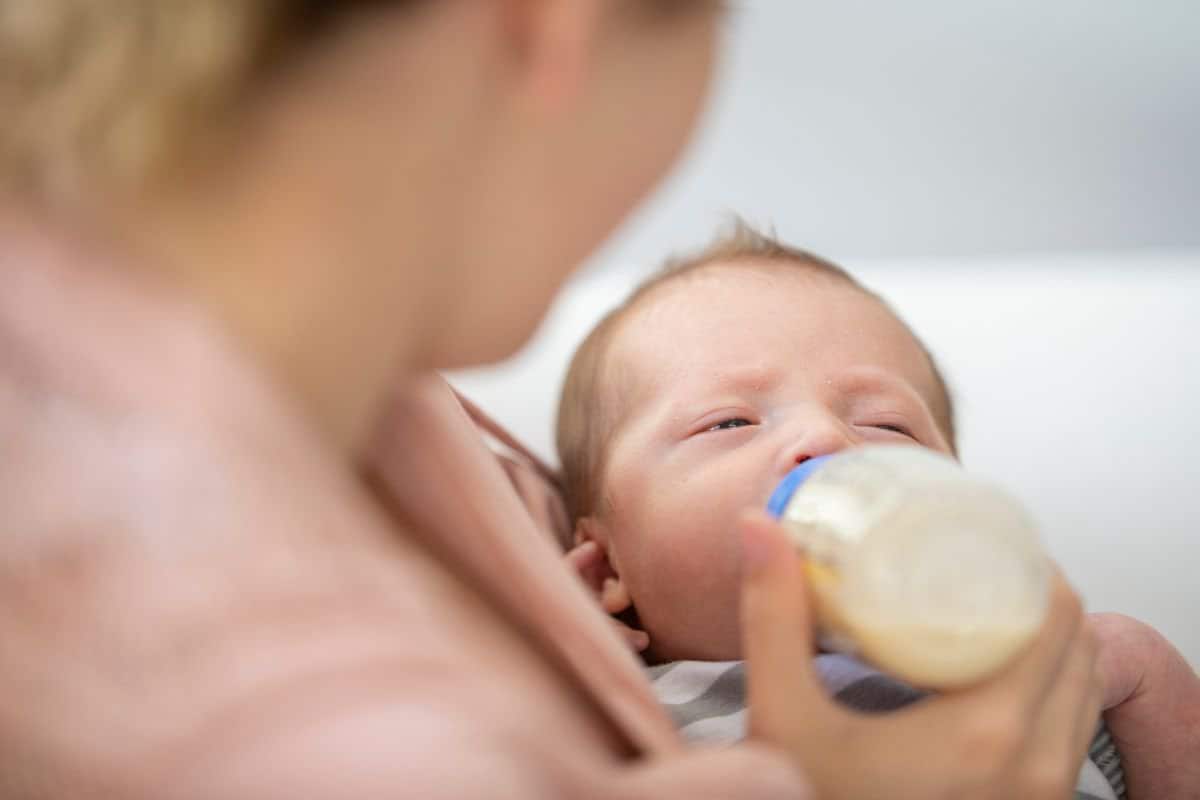
As a mom, I get that you want to ensure that your feeding journey is as smooth and comfortable as possible. That’s why I put together this list of must have items for formula feeding.
I know to create a nurturing and efficient formula feeding experience, you need to have the right baby formula essentials on hand. From selecting the perfect formula to preparing bottles with precision, and providing a safe and hygienic environment for feedings, these must-have items play a crucial role in meeting the nutritional needs of your baby while ensuring your peace of mind.
So, whether you are a first-time parent or an experienced caregiver, this formula feeding essentials checklist is here to ensure you have all you need on hand to provide the best care and nourishment for your little one throughout their formula feeding journey.
Selecting the Right Formula
If you’re looking to formula feed your baby, then you’re going to need a formula! And thankfully when it comes to formula feeding, there are a ton of reputable formula brands that offer a range of products to meet the diverse needs of infants.
From regular formula for healthy infants to sensitive formula for those with tummy troubles or allergies to specialized formula designed for premature babies or those with specific medical conditions. The key is choosing a formula that meets the nutritional needs your baby and their different dietary requirements and sensitivities.
I highly recommend, consulting with your pediatrician to help you make an informed decision based on your baby’s age, nutritional needs, and discuss any existing health concerns.
My formula feeding guide also provides a comprehensive breakdown on the types of formula and how to choose the right one.
Regular Formula
Regular or standard infant formula is designed to provide all the necessary nutrients that a healthy, full-term baby needs. It contains a balanced blend of proteins, carbohydrates, fats, vitamins, and minerals to support your baby’s growth and development. Regular formula is suitable for most infants who do not have specific dietary restrictions or sensitivities.
I also love that many brands now have a range of formula that tastes like breast milk to help babies with the transition to formula or for mixed feeding.
Sensitive Formula
For babies who experience fussiness, gas, or digestive issues, sensitive formula can be a helpful alternative. This type of formula is formulated to be easier to digest and may contain partially broken-down proteins or different carbohydrate sources. Sensitive formula can be beneficial for babies who show signs of lactose intolerance or mild sensitivity to cow’s milk proteins.
If you’re looking for a sensitive formula then check out these guides:
- Best Formula For Constipation And Gas
- Best Formula For Spit Up And Gas
- Best Formula For Colic And Gas
- Best Lactose Free Formula
Specialized Formula
Specialized or hypoallergenic formula is designed for babies with specific dietary needs or medical conditions. This type of formula is extensively hydrolyzed or based on amino acids, making it suitable for infants with severe allergies to cow’s milk protein. Additionally, some specialized formulas are specifically formulated for premature infants or babies with certain medical conditions, such as reflux or metabolic disorders. These formulas are usually recommended and prescribed by a healthcare professional based on the baby’s individual needs.
Essential Equipment for Formula Feeding
Formula aside, there is formula feeding equipment you need to ensure a smooth and convenient formula feeding journey. From carefully selecting the perfect baby bottles and nipples to maintaining impeccable hygiene with bottle brushes, each piece of equipment plays a crucial role in providing a nourishing and enjoyable feeding experience for both babies and caregivers.
So, let’s take a look at the essential equipment you need for bottle feeding.
Bottles
Baby bottles are an indispensable formula feeding must have, serving as the primary vessel for delivering formula to babies.
Whilst there are many to choose from, when first starting out, I highly recommend opting for BPA-free baby bottles with slow-flow nipples, as they closely mimic the natural flow of breast milk, allowing babies to feed comfortably and at their own pace.
As babies grow and develop their feeding skills, transitioning to faster-flow nipples becomes crucial to meet their increasing appetite and efficiency. The market offers a wide range of bottle designs, sizes, and materials to suit different preferences and needs.
Investing in high-quality bottles ensures the safety and convenience of formula feeding, giving parents the peace of mind that their little ones are receiving the nourishment they need to thrive.
These guides go into more detail for choosing the best baby bottles depending on your baby’s needs:
Nipples
Nipples come in various shapes, sizes, and materials to accommodate different feeding preferences and needs. Some babies may prefer traditional round-shaped nipples, while others might find orthodontic-shaped nipples more comfortable.
Additionally, nipples are available in different sizes to suit babies’ developmental stages. For example, preemie or newborn-sized nipples are smaller and softer for tiny mouths, while larger sizes are designed for older babies.
It’s important to note, the material of the nipple can also vary, with silicone and latex being the most common choices. Silicone nipples are more durable and resistant to odors and stains, while latex nipples are softer and may be preferred by some babies.
Choosing the right nipples for your baby involves a bit of trial and error, as each baby may have their own preferences. It’s advisable to start with slow-flow nipples for newborns and switch to faster-flow options as your baby grows and their feeding needs change. Observe how your baby responds to different shapes and materials to find the one that provides the most comfortable and efficient feeding experience.
Bottle Brush
Proper bottle cleaning is crucial to maintain good hygiene and prevent bacterial growth that could lead to infections or stomach upsets in infants.
A bottle brush with a nipple brush attachment is the ideal tool for effectively cleaning baby bottles and nipples. The long, narrow shape of the bottle brush allows it to reach all areas of the bottle, including the bottom and sides, to remove any formula residue or milk film.
The nipple brush attachment is designed to clean the narrow opening of the nipple thoroughly. It’s essential to wash the bottle brush and nipple brush after each use and replace them regularly to maintain their cleaning effectiveness.
Sterilizer
Sterilizing your baby’s bottles ensures the utmost hygiene and safety for a baby’s feeding equipment.
There are 3 ways to do this: boiling, steam sterilization, and chemical sterilization.
If you breastfeed and only require occasional bottle sterilization, the boiling method could suffice, and it offers a cost-effective alternative to purchasing a steam sterilizer. However, if you are expressing milk and/or bottle feeding regularly, then I recommend investing in a steam sterilizer.
There are several types of bottle steam sterilizers available in the market, each designed to cater to different needs and preferences of parents. Here are some common types:
Electric Steam Sterilizers: These are the most popular and widely used type of bottle steam sterilizers. They work by generating steam through an electric heating element, which effectively kills bacteria and germs on baby bottles and other feeding equipment. Electric steam sterilizers typically have multiple compartments to accommodate several bottles and accessories at once, making them convenient for busy parents.
Microwave Steam Sterilizers: Microwave steam sterilizers are compact and portable, making them an excellent choice for parents on the go or those with limited kitchen space. These sterilizers use steam created by adding water to a specific reservoir, which is then heated in the microwave. The steam generated within the microwave effectively sterilizes the bottles and nipples. Microwave steam sterilizers are quick and straightforward to use, making them a popular choice for many parents.
Electric Bottle Sterilizer and Dryers: This type of steam sterilizer not only sterilizes but also includes a drying function. After the bottles have been sterilized with steam, the sterilizer transitions to a drying cycle, eliminating the need for towel drying or air drying. Electric bottle sterilizers with drying functionality are convenient for ensuring bottles and nipples are thoroughly dry and ready for use.
UV Light Sterilizers: UV light sterilizers use ultraviolet (UV) rays to eliminate harmful bacteria and viruses on baby bottles and feeding accessories. These sterilizers are becoming more popular due to their chemical-free sterilization process. UV light sterilizers are compact and can be used on the go, providing a safe and efficient way to maintain hygiene for baby feeding equipment.
Formula Dispenser
A formula dispenser simplifies and streamlines the process of formula feeding, especially for parents on the go. This clever accessory offers the convenience of pre-measured formula portions, ensuring that parents can effortlessly prepare bottles outside the home without the need to carry a bulky formula canister.
With separate compartments to hold individual servings of formula powder, the dispenser remains a hygienic and practical solution. Each compartment can hold enough formula for one feeding and allows parents to carry multiple servings without worrying about cross-contamination.
The formula dispenser ensures that formula powder stays dry and fresh until needed, preventing clumping or spoilage. Whether on a short outing or an extended trip, the formula dispenser provides a reliable and organized way to keep the baby well-fed and content, making it an essential tool for any formula feeding journey.
Bibs
Bibs are a lifesaver when it comes to keeping babies clean and dry during feedings. Whether it’s breast milk or formula, babies are known for their messy eating habits, and milk spills or dribbles are all too common. Bibs provide a protective barrier, preventing milk or food from soaking into the baby’s clothing and causing unnecessary messes. This not only keeps the baby’s clothes cleaner but also reduces the need for frequent outfit changes, saving time and effort for parents.
There is a variety of different types of bibs available, each designed to cater to different needs and preferences. Two of the most popular types include:
Traditional Cloth Bibs: made from soft and absorbent materials like cotton, are suitable for everyday use and easily washable. They often come with adjustable snaps or hook-and-loop closures, allowing for a comfortable fit as the baby grows.
Silicone Bibs: known for their easy cleaning and waterproof properties. They can be wiped clean or even placed in the dishwasher after use, making them convenient for parents on the go. Additionally, some bibs come with built-in pockets to catch food crumbs and spills, reducing messes even further.
Burp Cloths
Burp cloths are essential for handling spit-ups, a common occurrence during and after feedings, especially in younger babies. When babies burp or experience reflux, small amounts of milk or formula may come back up, so burp cloths act as a barrier to catch and absorb these spills. They protect both the baby’s clothing and the parent or caregiver from getting soiled during burping sessions. Moreover, burp cloths are also helpful during bottle-feeding, as babies can sometimes spit up or dribble milk while feeding.
You may also like this guide on how many burp cloths do I need?
Measuring Scoop
Accurate formula measurements are of utmost importance when preparing a baby’s bottle.
Babies have specific nutritional needs based on their age, weight, and developmental stage, and precise formula measurements ensure that they receive the right balance of nutrients for healthy growth and development. Too much or too little formula can impact the baby’s nutrition, leading to potential issues such as undernourishment or overfeeding.
Measuring the formula correctly also helps prevent issues like constipation or stomach discomfort in infants, as it ensures that the formula is mixed at the appropriate concentration.
Good news is most infant formula containers come with a measuring scoop specifically designed for accurate formula preparation. These scoops are standardized to provide the correct amount of formula powder needed to make one serving. However, if you prefer more precise measurements, you can use a dedicated formula scoop.
High-Quality Water Source
The quality of water used for formula preparation is vital for the baby’s health and safety. It’s essential to use clean, safe, and potable water to reduce the risk of waterborne contaminants.
In areas where tap water may not meet safety standards, using filtered water or bottled water can be a suitable alternative. Boiling tap water for at least one minute and then allowing it to cool before mixing with formula is another method to ensure water safety.
Thermos Flask
A thermos flask is a practical accessory for formula feeding, especially when traveling or outside the home. It allows parents to carry warm water with them, ensuring that they can quickly and easily prepare formula whenever the baby needs a feeding. A properly insulated thermos flask can keep water warm for an extended period, providing a reliable source of warm water on the go.
Optional Equipment for Easier Formula Feeding
When it comes to equipment for formula feeding there are a ton of optional baby feeding items. Whilst you don’t need, they are certainly very convenient! Here is my list of additional baby feeding supplies to consider:
Formula Maker
If you simply want to skip the hassle of making bottles, ensuring they are perfectly measured and at the right temperature ready to serve, then you may want to consider a infant formula maker!
These modern feeding appliances are designed to dispense, mix, and warm your baby’s bottle almost instantly, which can be a lifesaver in the middle of the night.
Bottle Warmer
A bottle warmer is an optional yet convenient device that many parents find useful for heating formula to an ideal temperature quickly and safely. When babies prefer their formula warm or at room temperature, a bottle warmer can be a lifesaver during those late-night feedings or times when the baby is particularly fussy.
These devices use gentle heat to warm the bottle evenly, avoiding hotspots that can occur with other heating methods like microwaving. The controlled warming process helps retain the nutrients in the formula, ensuring that the baby gets the most out of each feeding.
Formula Mixer or Shaker
A formula mixer or shaker can be a game-changer for parents seeking a quick and convenient way to mix formula. These handheld devices effectively blend formula powder with water, ensuring a smooth and clump-free mixture. They eliminate the need for vigorous shaking or stirring, which can lead to formula clumping and inconsistent concentrations. Formula mixers or shakers save time and effort, providing a consistent and well-mixed formula with each use.
Bottle Drying Rack
A bottle drying rack provides a hygienic and organized solution for drying baby bottles and accessories. After washing bottles, nipples, and other feeding equipment, a bottle drying rack allows them to air dry thoroughly, eliminating the risk of moisture-related contamination.
While it is optional, a bottle drying rack features numerous pegs and slots, providing ample space to accommodate multiple bottles and accessories, ensuring they are kept upright to allow proper airflow and quick drying. This not only helps maintain the bottles’ cleanliness but also extends their longevity.
Additionally, some drying racks come with separate compartments for bottle parts, making it easy to keep all the pieces together and avoid misplacing any essential components.
Comfortable Feeding Chair
A comfortable feeding environment is crucial for both the baby and the caregiver. Having a designated feeding chair or space can provide a calming atmosphere for feedings, allowing the baby to relax and enjoy their meal. Being in a comfortable environment can also enhance bonding between the baby and the parent during feeding times.
Here are some great guides if you’re looking for a dedicated nursery glider:
- Best Nursery Glider For Short Mom
- Best Nursery Glider For Small Spaces
- Best Nursery Glider For Tall Parents
- Best Gliders For Twins
- Best Nursery Glider
- Do I Need A Nursing Chair?
With a back height of 41.5inch and a depth of 38 inch, this GreenGaurd Gold certified glider is perfect for tall parents!
Not only does the 7 inch seat cushion provide comfortable seating, but you'll also love the bonus lower back pillow for additional lumbar support. The glider can also support up to 300 pounds.
It comes with an easy to open and close, plush leg rest so you can sit back and relax.
You'll also love the premium water repellent and stain resistant fabric to help your glider looking new for years to come.
Dimensions: 29" W x 38" D x 41.5" H
Feeding Pillow
For parents who are formula feeding, using a feeding or nursing pillow can be beneficial for positioning the baby comfortably during feedings. Nursing pillows provide support for the baby’s head, neck, and body, reducing strain on the parent’s arms and shoulders during feeding sessions. The added support allows the baby to feed comfortably, promoting a more enjoyable and relaxed feeding experience for both the baby and the parent.
The My Brest Friend nursing pillow is a fantastic choice when it comes to supporting both mother and baby during breast and bottle feeding.
The pillow wraps around your torso providing built-in back support and is secured with a clasp so it stays in position.
The top of the cushion is flat which helps your baby to maintain the ideal positioning to latch on.
And the flat front cushion eliminates the gap between the baby and parent, which prevents your baby from rolling in or away during breastfeeding.
The cover is both removable and machine washable for easy cleaning.
Tracking Feeding Progress
Tracking formula feeding progress is essential for ensuring the baby’s health and well-being and, in my opinion, a must have for parents a must have for those starting out on their formula feeding journey.
Thankfully, there are several ways to effectively track formula feeding progress. This include:
Feeding Journal: Keep a dedicated notebook or journal to record each feeding session. Note down the time of each feeding, the quantity of formula consumed, and any observations or comments about the feeding experience.
Feeding Apps: There are various mobile apps designed specifically for tracking feeding progress. These apps often come with helpful features like timers, reminders, and the ability to record feeding times and quantities.
Spreadsheet: Create a simple spreadsheet on your computer or device to track feeding details. You can customize the columns to include feeding time, quantity, and any additional notes.
Baby Tracker Sheets: Many baby care websites and parenting resources offer printable baby tracker sheets that you can fill in and use to record feeding progress.
Growth Chart: Plotting the baby’s weight and growth on a growth chart can help track overall progress and ensure that the baby is gaining weight steadily.
Bottle Labels: Use bottle labels with space to record the date, time, and quantity of formula for each bottle. This method is particularly useful for daycare or when multiple caregivers are involved.
Whiteboard or Wall Calendar: If you prefer a visual approach, use a whiteboard or wall calendar to jot down feeding details. This can serve as a quick reference for caregivers and family members.
Camera or Video Diary: Taking pictures or videos of the baby during feeding time can help capture the feeding experience and any noteworthy observations.
Doctor’s Recommendation: Consult with the baby’s pediatrician for specific guidance on tracking feeding progress. They may have specific forms or charts they recommend to monitor the baby’s feeding habits and growth.
FAQs
Formula feeding essentials refer to the must-have items and equipment needed to provide a safe, convenient, and hygienic formula feeding experience for babies. These essentials typically include high-quality formula, baby bottles with suitable nipples, bottle brushes for cleaning, sterilizers for proper hygiene, a formula dispenser for on-the-go feeding, and optional items like a bottle warmer and bottle drying rack.
A bottle warmer is not a necessity, but it can be a useful tool for quickly and safely heating bottles to a desired temperature. If you prefer to serve your baby’s formula warm or at room temperature, a bottle warmer can save time and effort, especially during nighttime feedings.
While not an absolute necessity, a bottle drying rack is a practical addition to your formula feeding essentials. It provides a hygienic and organized space for air-drying baby bottles and accessories, helping to prevent moisture-related contamination and extending the life of the bottles.
To ensure accurate formula measurements, it is best to use the included measuring scoop that comes with the formula container or a dedicated formula measuring spoon. Regular spoons can vary in size, leading to inconsistent formula concentrations and potentially impacting the baby’s nutrition.
Formula mixers or shakers are not necessary but can be beneficial for achieving a smooth and clump-free formula. They offer a convenient and efficient way to blend formula powder with water, ensuring consistency and a pleasant feeding experience for the baby.
Related Posts
- How Many Baby Bottles Do I Need?
- Does Baby Formula Expire?
- Do Baby Bottles Expire?
- How To Warm Bottles On The Go
- Best Enfamil Formula
Final Thoughts
These must haves for formula feeding are a collection of essential items that make the formula feeding journey smoother, more convenient, and enjoyable for both parents and babies.
From selecting the right formula to ensuring proper hygiene and organization, these must-haves play a crucial role in providing the best care and nourishment for infants.
Whilst high-quality formula and baby bottles with slow-flow nipples ensure comfortable and efficient feeding, bottle brushes and sterilizers maintain impeccable hygiene for the baby’s health.
Optional tools like formula mixers and comfortable feeding chairs further enhance the overall experience. And keeping track of feeding progress with a feeding chart provides valuable insights into the baby’s growth and nutritional intake.
With these essentials in hand, parents can embark on a formula feeding journey with confidence, knowing they have everything they need to create a nurturing and nurturing environment for their little ones.
